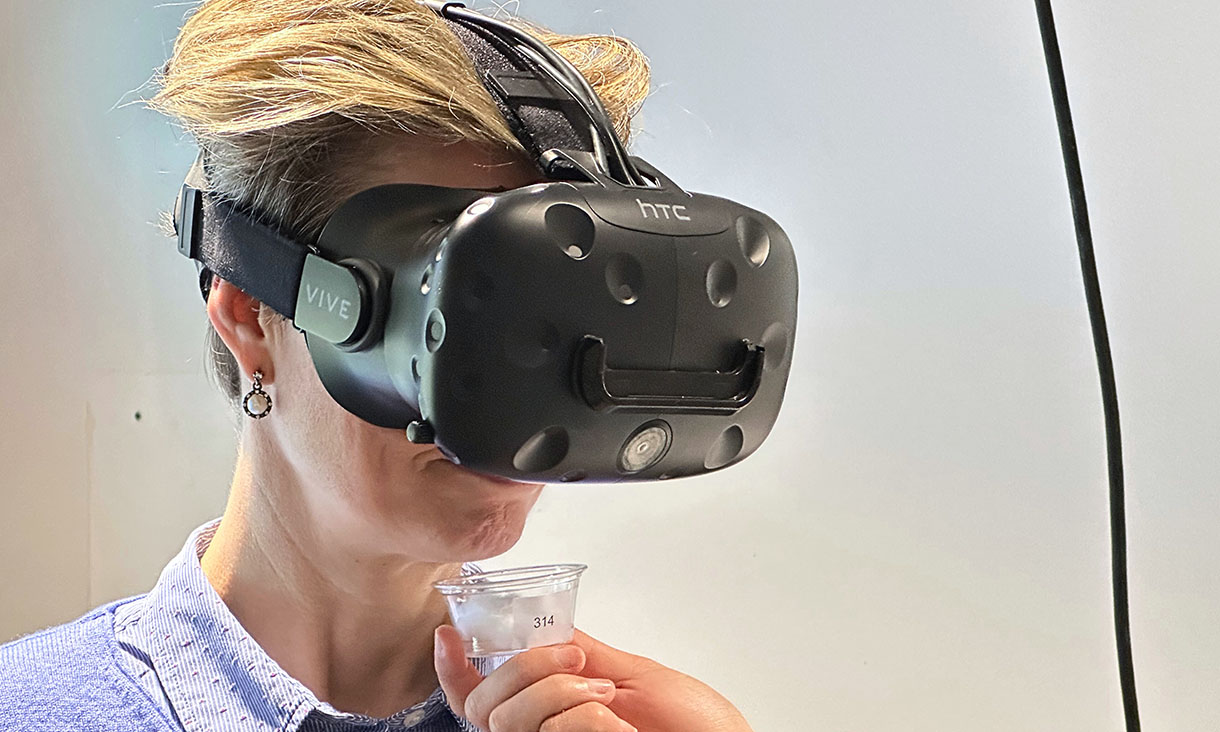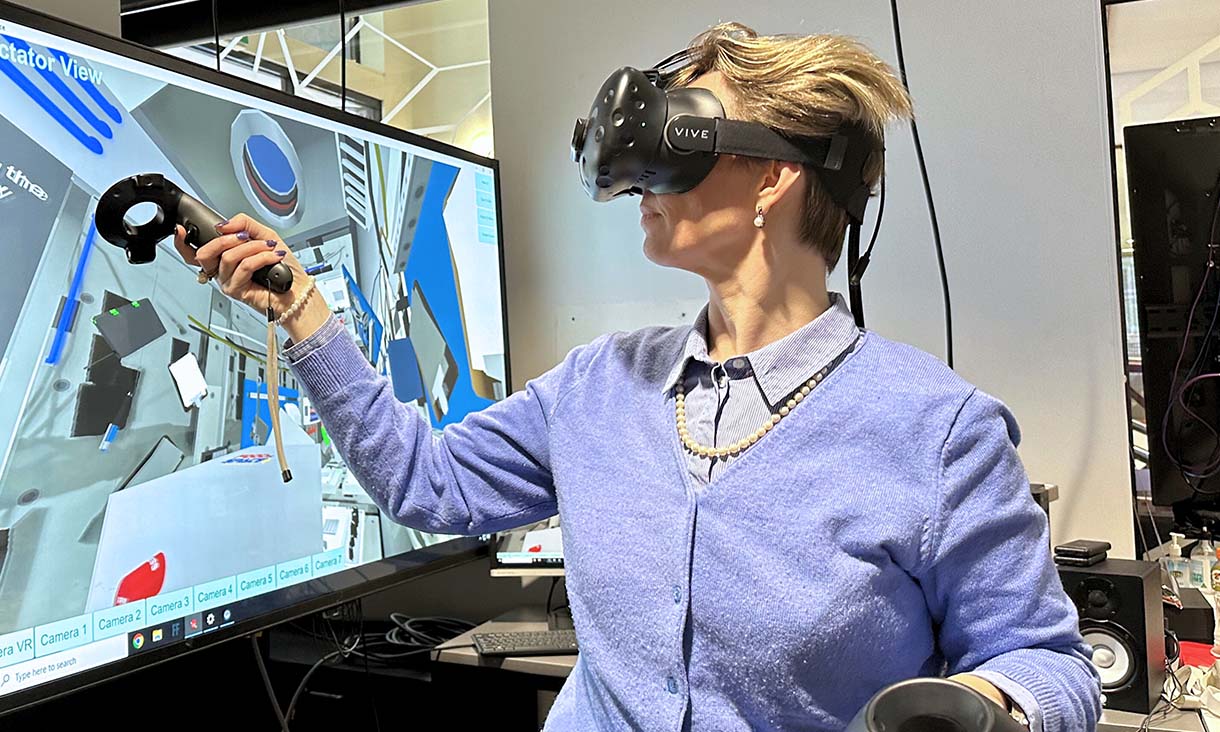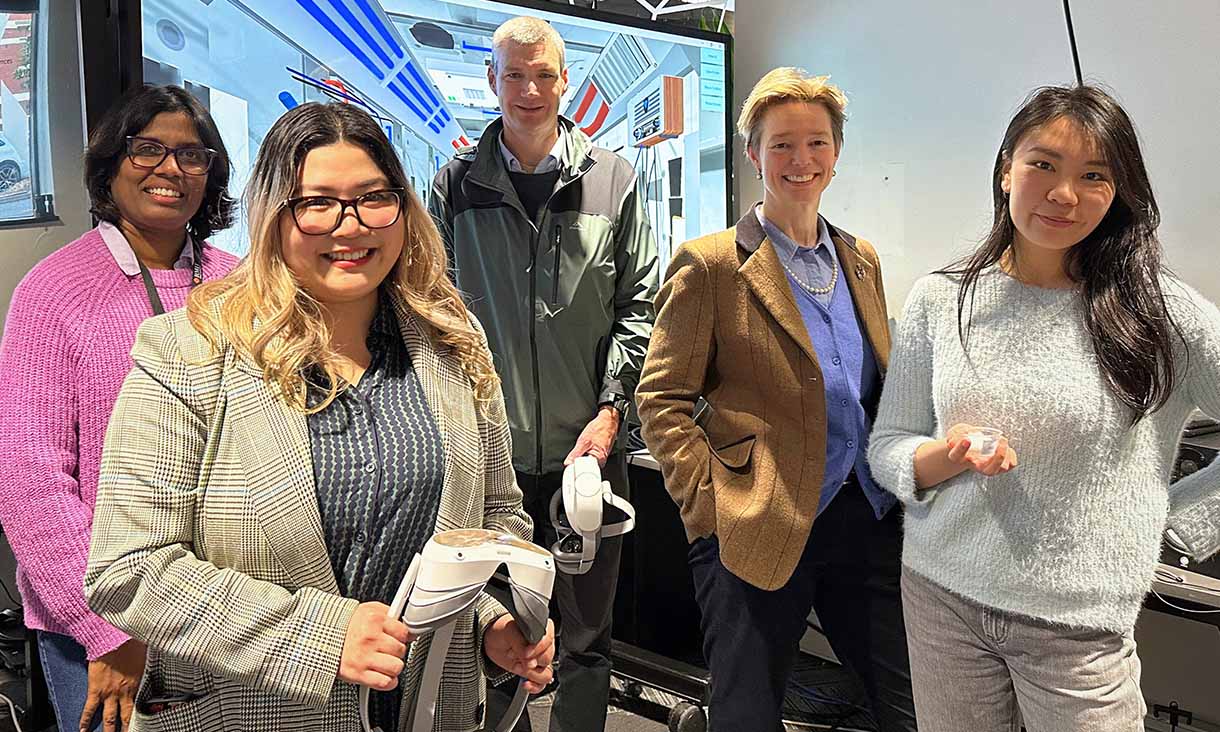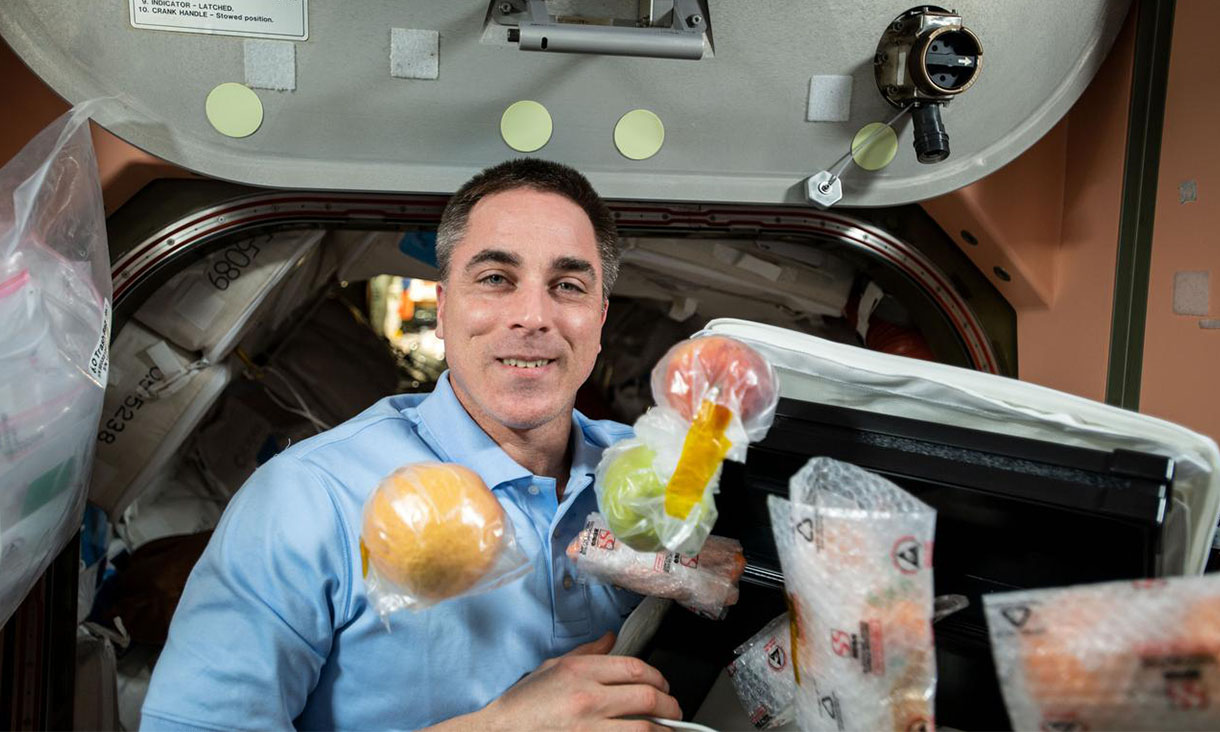VISUAL: Dr Julia Low stands in front of screens with view of the surface of Mars.
DR JULIA LOW SPEAKS: It's well known that astronauts do not enjoy their foood in space so what we are trying to do at rmit is to try and develop a strategy to understand how do astronauts taste food in space using virtual reality.
VISUAL: Footage from NASA of a person's hands interacting with an assortment of food on a board in a microgravity environment.
VISUAL: Dr Julia Low stands in front of screens with view of the surface of Mars.
DR JULIA LOW SPEAKS: One of the problems that we are reading in the literature is that astronauts tend to not meet the 100% nutrition requirement when they are travelling in space so this is a problem because this means that we don't know if we can travel beyond the six months or one one year in space.
VISUAL: A person's hand holds a controller in front of screens showing a simulation inside the International Space Station.
DR JULIA LOW SPEAKS: So what we've done is to we first create an immersive International Space Station environment using virtual reality.
VISUAL: Dr Julia Low stands in front of screens with view of the surface of Mars.
DR JULIA LOW SPEAKS: We try and create this environment so that we can actually test different types of food. In this virtual reality environment and we had participants come in and we rated their responses of different types of aroma.
VISUAL: A person with virtual reality goggles holds a controller in front of screens showing a simulation inside the International Space Station.
DR JULIA LOW SPEAKS: What we found through this study is that people are different in terms of how they smell different types of aroma.
VISUAL: Associate Professor Jayani Chandrapala stands in front of screens with a view of Earth's atmosphere displayed in various shades of blue.
ASSOCIATE PROFESSOR JAYANI CHANDRAPALA SPEAKS: All these aroma that we studied has their unique chemical profiling. However when it comes to vanilla and almond there's a common chemical compound called benzaldehyde, which gives a sweet aroma.
VISUAL: A person's hands pick up and open a small plastic container with a cotton bud inside from a tray holding several of the same kind of containers.
VISUAL: Associate Professor Jayani Chandrapala stands in front of screens with a view of Earth's atmosphere displayed in various shades of blue.
ASSOCIATE PROFESSOR JAYANI CHANDRAPALA SPEAKS: So in our study we believe that it's this sweet aroma that gives that high intensity within the VR setting.
VISUAL: Associate Professor Gail Iles stands in front of screens with a view of Earth's atmosphere displayed in various shades of blue.
ASSOCIATE PROFESSOR GAIL ILES SPEAKS: Today, we've seen astronauts living in low Earth orbit on board the International Space Station and missions are typically no longer than 6 months in duration.
VISUAL: Footage from NASA of two female astronauts flipping in a microgravity environment.
VISUAL: Associate Professor Gail Iles stands in front of screens with a view of Earth's atmosphere displayed in various shades of blue.
ASSOCIATE PROFESSOR GAIL ILES SPEAKS: What we're going to see in the future with the Artemis missions are much longer missions years in length and in particular when we go to Mars so we really need to understand the problems with diet and food and how crew interact with their food.
VISUAL: A person with virtual reality goggles holds a controller in front of screens showing a simulation inside the International Space Station.
VISUAL: Associate Professor Gail Iles stands in front of screens with a view of Earth's atmosphere displayed in various shades of blue.
VISUAL: An animation from NASA of an Artemis space craft in orbit of a planet.
VISUAL: Footage from NASA of a female astronaut eating a tortilla in a microgravity environment.
ASSOCIATE PROFESSOR GAIL ILES SPEAKS:The incredible thing with this VR study is that it really does go a very long way to simulating the experience of being on the space station and it really does change how you smell things and how you taste things.
VISUAL: A woman holds an open container with a cotton bud up to the nose of a woman wearing virtual reality goggles, in a demonstration of how the study was conducted.
VISUAL: Dr Julia Low stands in front of screens with view of the surface of Mars.
DR JULIA LOW SPEAKS: It's not only about astronauts but this could have implications for other people living in similar socially isolated environments such as nursing homes.
DR JULIA LOW SPEAKS: Well the next thing that we're trying to do is to create a more immersive environment so we are creating and including more realistic sounds as well as more realistic visual graphics so that people are feeling more immersed and engaged in these kind of environments.
VISUAL: A man wearing virtual reality goggles interacts with a simulation of the International Space Station, opening a box with an RMIT logo.
VISUAL: Dr Julia Low stands in front of screens with view of the surface of Mars.
VISUAL: The video ends with the RMIT logo on a black background.








